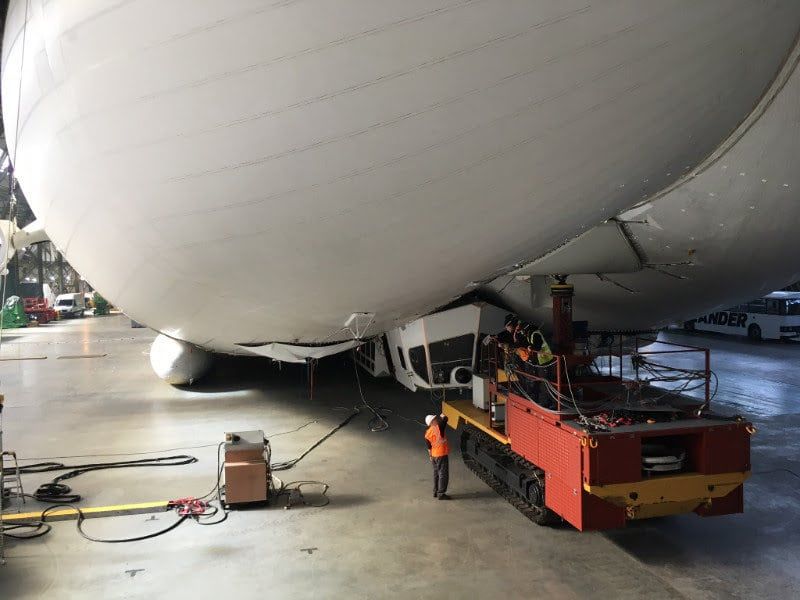
The Airlander which has been given giant inflatable landing feet. See Masons copy MNAIRCRAFT: The world's largest aircraft has been given a pair of "giant inflatable landing feet" after crashing when it got caught in power lines. The £25m Airlander 10, airship, dubbed the 'giant bum' due to its appearance, nose-dived during a test flight last year. No-one was injured in the accident at Cardington Airfield, Beds., on August 24, but the cockpit was effectively destroyed.
The world’s largest aircraft has been given a pair of “giant inflatable landing feet” after crashing when it got caught in power lines.
The £25m Airlander 10, airship, dubbed the ‘giant bum’ due to its appearance, nose-dived during a test flight last year.
No-one was injured in the accident at Cardington Airfield, Beds., on August 24, but the cockpit was effectively destroyed.
A report by The Air Accidents Investigation Branch found the 320ft long airship was flying at an excessive height when it prepared to land and nosedived into the ground.
It “suddenly pitched down to about 18 degrees and started to descend” after its mooring line got tangled up.
Following the crash, a number of changes have been made including the installation of giant airbags which resemble “giant inflatable landing feet.
They are stowed during flight but are deployed on landing.
Hybrid Air Vehicles (HAV) programmes director Nick Allman said: “What we’ve done is put in 63 changes – some to the aircraft but most to process, procedure, and training – so that sort of event is extremely unlikely to ever happen again
“We had to look at how you stop 35 tonnes of airship coming down and squashing that composite flightdeck area.
“It will give us no drag [and] no change in how the aircraft flies normally.”
Christened the Martha Gwyn, the vast aircraft measures 302ft long and is around 50ft longer than the biggest passenger jets.
Engineers spent three years working on the Airlander 10, which is filled with 1.3 million cubic feet of helium – enough to fill 15 Olympic-sized swimming pools.
HAV said the repairs and changes were now complete and, following “an extensive test phase”, it is hoped Airlander will take to the skies again by the end of April.